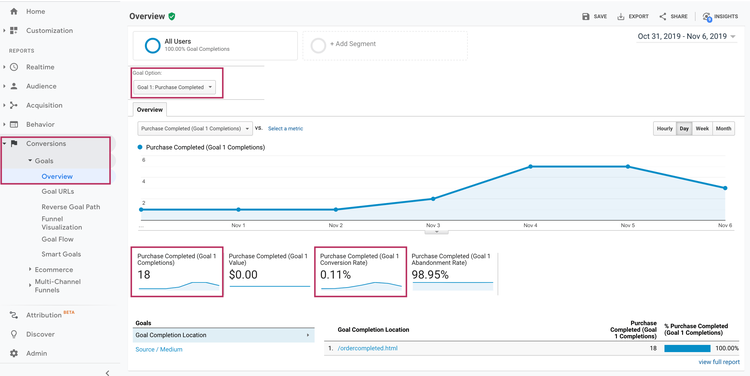What Data Is Google Analytics Goals Unable to Track and Why
Revealing the Blind Destinations: Comprehending What Google Analytics Goals Can not Gauge
In the realm of electronic analytics, Google Analytics stands as an effective tool for monitoring and evaluating online customer interactions. Understanding what Google Analytics objectives can not determine is essential for gaining a thorough sight of user habits and engagement.
Customer Habits on External Platforms
Understanding just how individuals engage on outside platforms is crucial for maximizing on-line approaches. Exterior platforms, such as social media networks, referral internet sites, and on the internet forums, play a substantial function in driving traffic to a firm's website. By evaluating customer behavior on these platforms, services can get beneficial understandings into the performance of their advertising efforts and the choices of their target audience.
One key aspect of customer actions on outside platforms is the reference resource. By tracking where the customers are originating from, companies can recognize which platforms are driving the most traffic to their website. This info can help companies designate their sources more efficiently, concentrating on the systems that generate the most effective results.

Offline Interactions and conversions
Analyzing user behavior on external systems gives valuable understandings right into on-line methods; nonetheless, taking into consideration offline conversions and communications is similarly necessary for a thorough understanding of a firm's general performance. While Google Analytics excels at tracking online communications, it drops short in capturing the complete customer trip that usually consists of offline touchpoints. Offline conversions, such as in-store acquisitions or phone queries, play a considerable role in many businesses' success. Overlooking these interactions can result in a distorted sight of the efficiency of advertising campaigns and total service performance.

Acknowledgment Beyond Last Click
When delving right into the world of electronic advertising analytics, it comes to be necessary to look beyond the single touchpoint of the last click for a much more comprehensive understanding of acknowledgment. While Google Analytics gives valuable insights into individual actions, counting solely on last-click attribution can be limiting - what data is google analytics goals unable to track. Attribution designs that go beyond the last click use an extra nuanced sight of the consumer trip, taking into consideration all the touchpoints that lead to a conversion
Acknowledgment past the last click permits marketers to appoint credit scores to various interactions along the conversion course, offering a more clear image of the effectiveness of different advertising and marketing networks. By discovering multi-touch acknowledgment designs such as direct, time degeneration, or position-based attribution, organizations can better assign their marketing spending plans and enhance their techniques for maximum influence.
Comprehending the hop over to here influence of each touchpoint in the conversion procedure is important for making informed choices and making best use of ROI. By welcoming attribution past the last click, companies can gain much deeper insights right into client actions and customize their marketing initiatives a lot more effectively.
Cross-Device and Cross-Browser Monitoring

In a similar way, cross-browser tracking complements cross-device tracking by catching customer actions as they switch between different web internet browsers. Recognizing how users communicate with web sites on numerous internet browsers can help online marketers enhance their on-line experiences to make certain uniformity and functionality across different platforms.
Qualitative Data and Individual Intent
Comprehending individual intent with qualitative information analysis is crucial for developing targeted digital advertising official site and marketing techniques that resonate with the needs and preferences of the target audience. Qualitative data provides understandings right into the 'why' behind customer activities, clarifying motivations, emotions, and preferences that measurable information alone can not catch. By examining individual comments, comments, and interactions, marketers can uncover beneficial details regarding individual intent, permitting them to tailor their messaging, material, and offerings to better align with what their target market is looking for.
Qualitative data also aids in comprehending the context in which individuals involve with a web site or app. This contextual understanding enables marketing experts to produce more personalized and pertinent experiences, ultimately driving greater engagement and conversion prices. By diving into customer intent with qualitative information analysis, organizations can gain a much deeper understanding of their target audience, causing much more effective advertising and marketing methods that satisfy customers' assumptions and needs.
Final Thought
In final thought, Google Analytics objectives have restrictions in gauging individual behavior on exterior platforms, offline conversions, acknowledgment beyond last click, cross-browser and cross-device monitoring, and qualitative data related to individual intent. what data is google analytics goals unable to visit our website track. It is essential for services to be knowledgeable about these blind places in order to supplement their information analysis with various other tools and methods to acquire a more comprehensive understanding of their target market and improve their overall electronic advertising techniques
By assessing individual habits on these systems, companies can obtain important understandings right into the effectiveness of their advertising efforts and the choices of their target audience.
Assessing user habits on outside systems gives valuable insights into on the internet approaches; however, thinking about offline conversions and communications is similarly vital for a detailed understanding of a firm's total efficiency.In electronic advertising and marketing analytics, relocating past last-click acknowledgment to discover cross-device and cross-browser monitoring is important for acquiring an alternative understanding of individual interactions across various platforms and devices. By analyzing user feedback, comments, and communications, marketers can uncover valuable information concerning customer intent, permitting them to customize their messaging, material, and offerings to better align with what their audience is seeking.
By delving into customer intent via qualitative information evaluation, organizations can obtain a deeper understanding of their target audience, leading to more effective advertising and marketing strategies that meet individuals' assumptions and requirements.